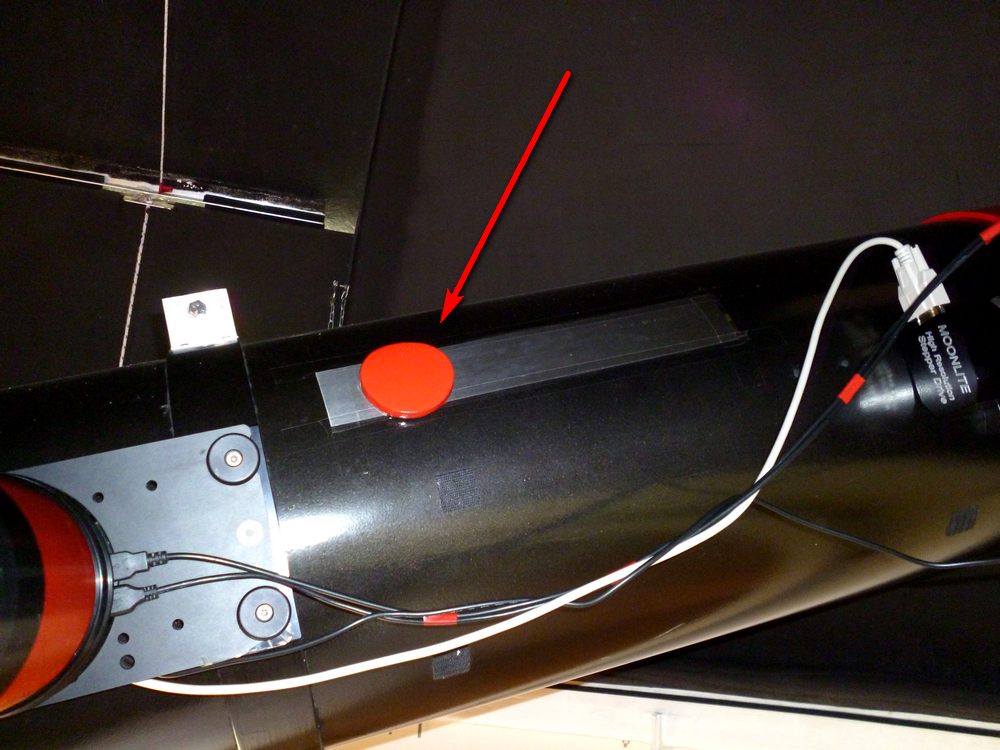| ASA DDM60 mount - page 4 |
| The calculated
polar offset. This seems to indicate that the mount was off by less than 2 arcminutes in RA and DEC. |
 |
||||
| Plot of errors in
the 7 star positions. |
 |
||||
Azimuth and Altitude corrections shown. The rotary encoders in the DDM60 are calibrated during the first polar alignment and the 'Resolution factor' shows the result. Things below 'Fourier-Parameter' are for advanced pointing file construction. It will be some time before I figure out how to do that! |
 |
||||
This is a stack of 5 minute exposures of M81. No guiding! Stars are very round with no evidence of trailing. The pointing file had 15 stars, all in the West hemisphere. |
 |
||||
| |
|||||
| I
have now put the big 10" reflector on the mount. I was concerned that it might
be too heavy but so far it has worked very well. See this You Tube video of the mount slewing under the control of a RumblePad joystick. |
 |
||||
| The first image with the 10" scope on the mount. No pointing model made so only short exposures to start with - 14x1 minute  The end of the counterweight arm has a steel washer that is quite sharp. Bumping into it in the dark can be painful. Solution - Put a length of foam normally used to wrap on scaffolding poles over the end.  Avoiding bumping the counterweight arm when moving around in the observatory is made much easier by putting a cap of glow-in-the-dark tape on the end. The tape needs to be charged in bright light during the day, and glows for several hours in the dark.  |
|||||
Current monitoring
If the mount is poorly balanced, or the PID tuning is bad, or the magnetic angle has
been found incorrectly, then errors occur.
They are usually accompanied by large current increases, so I have added a 10A ammeter to the power supply.
When all is well the current seldom rises above 2 amps.

Declination Balancing
Good balance is essential with a DDM mount.
It is easy to get the RA axis balanced because the counterweights can be moved
fractions of a millimeter on the counterweight shaft.
The DEC axis is much more difficult. The 10" Newtonian is so big and heavy that
shifting it 1mm in the tube rings can be too much.
To get round this problem I got a sheet of magnetic stainless steel bent to fit the
radius of the scope tube. This was then taped to the tube.
I cast a disc of lead and drilled 8 holes in on surface, and embedded 8 small
neodymium magnets in it. A layer of black felt covered the magnets.
The lead weight grips firmly to the steel plate, and can be easily adjusted to get
very precise balancing.
I have placed it slightly off to one side on the tube, to compensate for the weight of
the camera not being symmetrically arranged around the focuser.
